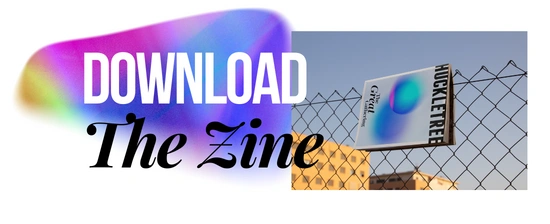Redesigning the workspace
Huckletree's Editorial TeamThe Editorial TeamHuckletree11/17/2022
The history of the modern office is the history of people trying to fix the modern office. When Frank Lloyd Wright’s Larkin Administration Building opened in 1906, it presented the first take on the open-plan office, organised like a white-collar production line with rows of desks and few walls thought to maximise output.
For the rest of the 20th century, office designers tweaked this model, trying to address the flaws — there was no privacy, no quiet, yet simultaneously little actual human interaction and connection. But little could change when the prevailing view was that ‘real work’ was what you did at your desk, under the manager’s gaze, and everything else was a distraction. Even the biggest change — the 1964 arrival of the office cubicle, or ‘Action Office’, by the brand Herman Miller — was not the major disrupter that its inventor Robert Propst intended. He’d wanted the desks arranged at 120-degree angles, like honeycomb, less linear and more open to serendipity.
It’s only recently, since the 2000s, that companies have started aiming for something different, focusing on creating various “zones” with varied functions that people could fluidly move between — an idea that had been presaged in 1950s Germany by a movement known as bürolandschaft, or “office landscaping”. It’s fortuitous that this change happened when it did, familiarising us with concepts such as hot desks, break-out spaces, booths and quiet zones, as it’s hard to picture the pandemic-driven shifts to remote and hybrid work happening without it. These interior design changes gave us a chance to get to know our own preferences better, empowering us with the information to make choices about where, when and how we wanted to work.
And so what does this mean for the workplace of the future? Some trends are already starting to emerge. First and most obviously, the physical workspace is being reconfigured to provide people with what they most miss at home: the opportunity to gather with others in ways that spark ideas, breakthroughs, creativity and fundamentally, connection. Desks are being further subtracted, and collaboration areas added. Flexible and modular floor space is also on the rise, with rolling dividers and mobile furniture allowing open areas to be adapted to groups of various sizes.
There’s also a dimension of not just physical design but experiential design. The annual Design Forecast from architecture firm Gensler says the top-performing companies are increasingly building the workplace into a “destination” that people are drawn to come in to experience. This means programming and curating how people come together, creating moments where they can grow their professional relationships as well as feeling stimulated and supported.
This is a time of change and experimentation. Not every idea for the future of work will stick, but every one is a chance to test, measure, learn and evolve. And in doing so, to jointly write a future where people work less but achieve more than ever before.
Download your copy of The Great Gathering Zine to find out how you can lead, steer and inspire your teams when together and apart. Happy Gathering.
Huckletree's Editorial Team
info@huckletree.com
